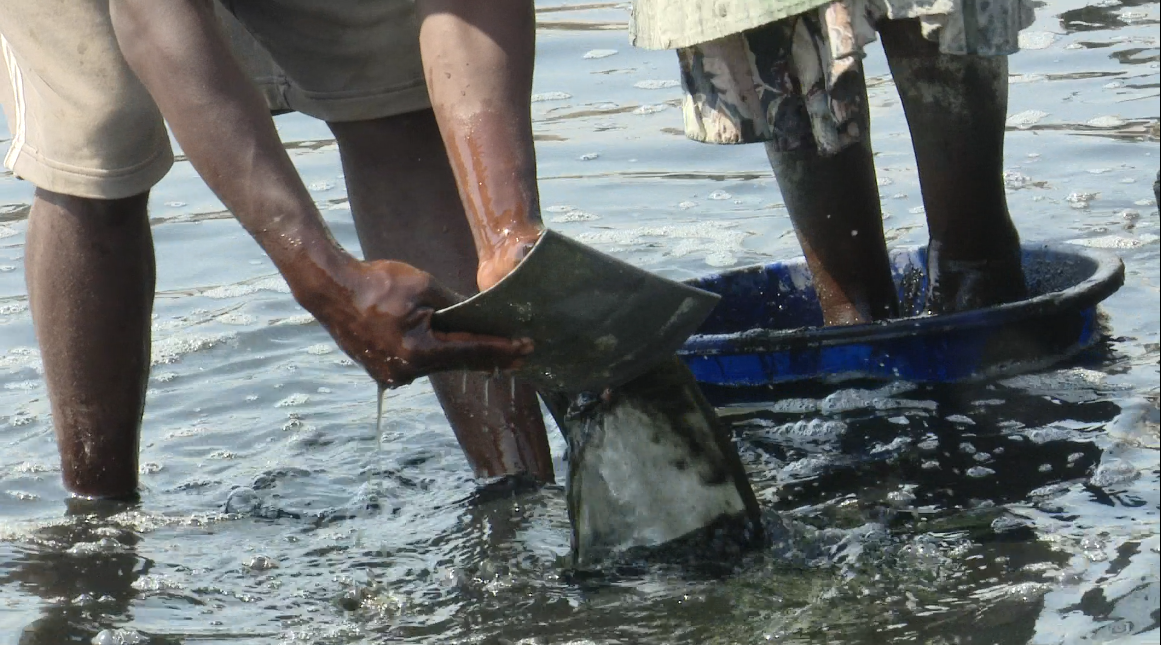Prime
Politics overshadows key issues on the Nile
What you need to know:
- Issues. On February 23, officials from the 10 states sharing the Nile under Nile Basin Initiative (NBI), convened in Dar es Salaam to celebrate the Nile Day under the theme: Our Shared Nile – Source of Energy, Food and Water for All. Frederic Musisi reports that the deliberations, as usual, centred more on the politics than on the pertinent socio-economic issues that affect the concerned countries.
“Nothing is more useful than water (but) scarcely anything can be had in exchange for it,” wrote Adam Smith, father of modern political economy, in his book Wealth of Nations.
The irony, known as the Diamond-Water Paradox, Smith observed that water, which is necessary to sustain any living thing, is very cheap yet a piece of diamond, an ornament anyone can do without, has a very high price.
In the years to come, projections are that this could change. Goldman Sachs, the American multinational investment bank, in a recent study described water as “the petroleum of the next century”, a melodramatic phrase that although seems far-fetched, ay pretty well reflect reality.
Some countries are already feuding and [some] have stopped short of drawing daggers at each other. Iran, Afghanistan and Pakistan; Turkey, Syria, and Iraq; Kazakhstan, Uzbekistan, Turkmenistan, Tajikistan and Kyrgyzstan, and closer to home, the ten Nile basin countries, are good examples.
In face of debilitating droughts, and with an expected increase in human consumption of water resources across the globe, experts have cautioned that [more] future conflicts are only waiting for a trigger.
The combined population of the ten Nile Riparian states was at least 437 million, or about 41 percent of Africa’s population, according to the 2012 State of the Nile Basin report prepared by Nile Basin Initiative (NBI), an inter-governmental body established 17 years ago to promote equitable utilisation of the world’s longest river and foster cooperation. Rough estimates, according to NBI, based on current numbers from all countries put the overall population at 480 million.
Ethiopia is the most heavily populated among the ten Riparian states, with 94 million people, closely followed by Egypt (83.9m) and DR Congo (69.6 m). Tanzania (49 m), Kenya (44 m), Sudan (38 m), Uganda (35 m), South Sudan (11 m), Rwanda (11 m) and Burundi (10 m) then follow.
By 2030, according to NBI, it is expected the total population of the 11 countries (including Eritrea) will be 648 million and nearly a billion by 2050.
“Water availability appears to be the chief determinant of population distribution in the basin,” the report reads in part. “In Egypt and Sudan, population is largely concentrated along the course of the Nile, while in the upstream countries it follows the pattern of rainfall distribution.”
The report indicates that population in the region “is rising rapidly, presenting governments with both opportunities and challenges. Population growth means increases in availability of labour for economic production, and markets expand.
On the other hand, it also means gloom in terms of increasing degradation of natural resources, puts pressure on economic infrastructure (transport, education, health, water, and power and telecommunication), increases food security concerns, and rural–urban migration, with the attendant challenges of rapid urbanisation.
Uganda, just like the other Nile Riparian states, is currently under strain of this double-edged dynamic.
“Considering that the factors that enabled a large population to make a positive contribution to economic development are not well established in most of the Nile countries, the challenges posed by the rising population far outweigh its benefits, and threaten to prevent these countries from becoming middle-income economies by 2025 or 2030,” the report reads.
The population danger
The proportion of the population of each country that lives within the basin ranges from 99 per cent for Uganda down to 4 per cent for DR Congo. In terms of actual numbers of people, Egypt has the largest population residing within the basin area (80.4 million) followed by Uganda (35.4 m) and Ethiopia (34.6 m), while DR Congo has the smallest population in the basin area (2.6 m).
An estimated 250 million people live within the basin, according to NBI.
The reports shows that despite “relatively high” annual growth rates (of between 4 percent and 5 percent) for urban populations in the basin, the dominance of rural populations is expected to persist until 2030 in nearly all Nile countries.
In Uganda, the government set itself an ambitious target of turning around the poverty shelled-shocked population to middle income class economy by 2020 now updated to 2030. This, however, has been watered down by several analysts, including the World Bank, on grounds that Uganda’s envisaged middle income status by 2020 is a vague imagination considering the basic global economic fundamentals that define middle class citizens as those involved in industries or value addition.
“I think our current conversation should be more around the current problems but sadly that is not the case,” Mr Innocent Ntabana, the NBI executive director, told this newspaper. Whenever you hear there is a conflict around water, he added, just know it touches more on livelihood because water is mainly used in food production.
This year’s Nile Day celebrations centered on the theme ‘Our Shared Nile – Source of Energy, Food and Water for All’ as a nexus between water and food and in spirit of highlighting the importance of food security in the framework of water resource management.
The chief guest and Tanzania’s Vice President Ms Samia Suluhu Hassan said it [the theme] provides us yet with another opportunity to highlight the importance of our Nile in the quest for food, water and energy security in the Basin.
“This theme is timely and relevant given the prevailing drought conditions affecting most of the Nile Basin Countries where hydropower, food and water availability has been drastically affected, Ms Hassan noted, reaffirming that only “collaboration and cooperation” are the best approaches of managing the river as the basin copes with the prevailing drought conditions.
Threat of underdevelopment, climate change, pollution
The populations of the Nile countries is growing at varying rates which ultimately means pressure on water resources but at the same time means increase in underdevelopment and pollution of the river. On the other hand, as world over, is the enormous challenge of climate change which is affecting and in the future will impact water levels.
Mr Ntabana, said an assessment of climate change and its impact on the river is one the issues being considered, especially when NBI launches its next ten year strategy later this year.
The Nile’s annual flow volume was/is estimated at 85billion cubic metres at the Aswan High Dam by the colonial agreements which granted Egypt a 75 percent share (55.5 billion cubic metres) and 25 percent (18.5 billion cubic metres) to Sudan with the assumption that the other countries can get water through other sources like rain or even fresh water lakes.
But with each country growingly realizing the need to secure water for the future, a new charter to ensure equitable sharing of the river was brought to the table back in 2010 and was [is] vociferously rejected by Egypt [and Sudan at first but made U-turn later] which says it needs water more than any other member.
As a result the charter, the Cooperative Framework Agreement (CFA), was put in the side to continue engaging Egypt, attempts which are ongoing. Early this month President Museveni, early this month at the occasion of the visiting Ethiopian Prime Minister Hailemariam Desalegn, called a meeting attended by all head of states of Nile sharing counties to resolve the impasse.
It was reported at the signing of the CFA some officials said were “tired of first getting permission from Egypt before using river Nile water before any development projects” which powers were granted by the colonial agreements.
At a joint press conference with Mr Desalegn, President Museveni said the lack of cheap electricity for the people living in the Nile basin possess more danger to the river because people have to turn to other cheaper forms of energy like forests to get firewood which in turn affects the eco system.
“The biggest danger of the Nile is damaging water in the tropics by the people. They cut trees for firewood that would help modify rainfall and end up damaging the eco system,” he cautioned, adding that over 40 billion cubic meters of bio mass are put to cooking (fire wood) per year, which he described as “worrying.”
The President also cited the growing tendency of agriculture in swamp areas, which he said is affecting the Nile’s catchment area.
Strategic Foresight Group (SFG), a Mumbai-India based think tank, in a paper titled “Blue Peace for the Nile” warns that the flow of the Nile as measured at Aswan on the border of Sudan and Egypt “experience very high degree of fluctuations, rendering the management of trans-boundary water very difficult.”
The paper also advances what other analysts have pointed out before that the river basin is witnessing a change in rainfall patterns with changes in seasonal periods, and shorter bursts of intense rains that are too rapid for agricultural growth.
“Climate change models predict increase or decrease of 15 to 20 per cent precipitation on an annual basis. However, most models concur that irrespective of the overall annual quantum, erratic patterns of rainfall and concentration over fewer days would affect productivity of agriculture,” the research reads in part.
“It is expected that temperature across the Nile Basin will increase by 1.5 to 2.1 percent by 2050. Almost the entire Nile region may become arid to semiarid in the next 30-40 years which will significantly reduce agricultural land.”
SFG, further, notes that floods and droughts have caused immense damage to the Nile basin countries both in terms of people affected as well as economic damage. For example between the years 1900 and 2012 there have been almost 140 incidents of floods in the basin of which more than 100 occurred in Ethiopia, Sudan, South Sudan, Kenya and Tanzania.
“During this period, more than 10 million people living in the Nile basin were affected by floods with around 4000 casualties.” From 1970 to 2004, Tanzania, Kenya, Sudan, South Sudan, Ethiopia have had more than 10 droughts; Uganda has had six to nine droughts; and Rwanda and Burundi have had 3-5 droughts.
“The experience of the last 30 years indicates that the five countries have greatest exposure to risks from floods and droughts in the next 30 to 40 years as well.”
Among the critical problems affecting the river basin, SFG, pointed out land degradation, deforestation, urbanisation, and over grazing, climate change, and desertification.
Some of the issues, Mr Ntabana, said there is a blue print for starting conversations around them—the 10 year strategy NBI plans to roll out.
Land degradation around the Nile, SFG, says the upper Lake Albert which feed the river is under threat of siltation due to inflows from Kyoga Nile, as well as Semliki River which carries sedimentation from DRC.
“It is estimated that 4 percent - 12 per cent of GNP is lost from environmental degradation, of which 85 per cent is through soil erosion, nutrient loss and crop changes. Also, the rate of soil fertility depletion in Uganda is one of the highest in Sub-Saharan Africa,” the think tank postulates.




